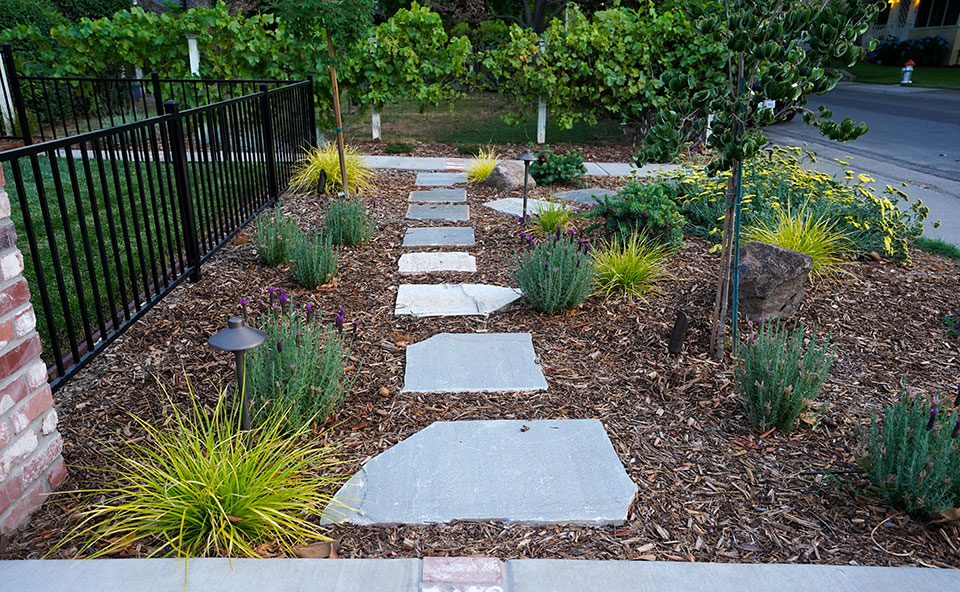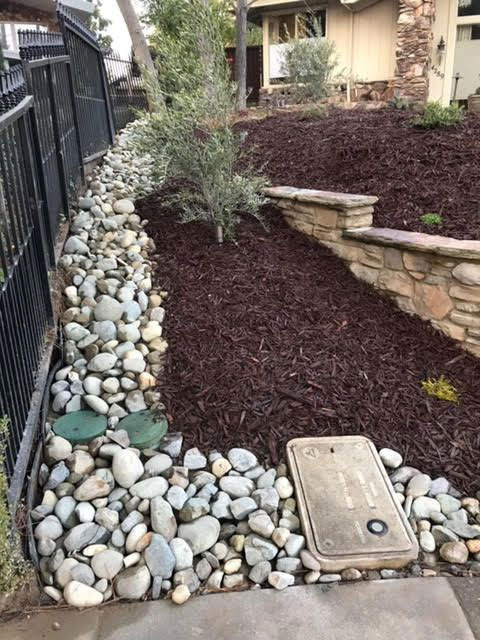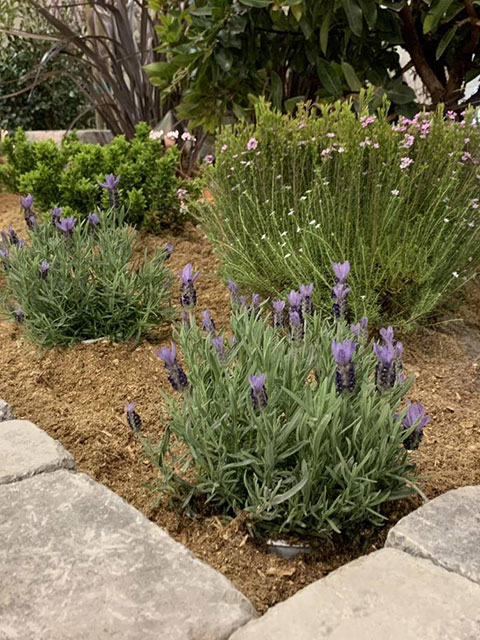Sustainable Landscaping
Interested in a drought tolerant landscape? JVM installs drought tolerant landscapes which are beautiful and compliments your property — no more all cactus yards! You can have a beautiful California Native garden, Eco garden, or Mediterranean garden that gives your property stunning color, helps the environment, and saves thousands of gallons of water. Plus it is low maintenance! You can learn more about sustainable landscaping at calwep.org.
Popular Sustainable Landscaping Applications Include:
Sustainable Landscaping FAQ
Answers to the common questions about sustainable landscaping use and benefits.
Major goals and benefits of sustainable landscaping include a reduction in water usage (no run off or puddles), improving soil health (minimal use of fertilizers and pesticides), reducing maintenance labor and organic waste generation, carbon sequestration, and creating habitat through appropriate plant selection.
California native plants evolved with our local climate, soil types, and animals — once established many native plants need minimal irrigation beyond normal rainfall. Native plants have developed their own defenses against many pests and diseases, so don’t require pesticides. And research has shown that native wildlife frequently prefer native plants, including hummingbirds, butterflies, and other beneficial insects. As development replaces natural habitats, planting gardens and landscape with California native plants can help provide an important “bridge” to nearby remaining wildlands.
A dry creek bed, also known as a dry stream bed, is a gully or trench, usually lined with stones and edged with plants to mimic a natural riparian area. One of the great benefits of the dry creek bed is the ability to soak up water in the event of rain, which is a less invasive drainage solution, thus preventing erosion by reducing runoff. In addition, dry creeks are an attractive focal point that works to divide space in your landscape.
Eco-friendly landscaping, which is also known as green or sustainable landscaping, is a way of creating and maintaining land in order to save as much energy as possible, while also being kind to the environment. Green landscapes nurture wildlife; reduce air, soil, and water pollution; and make healthy recreational spaces. The methods of eco gardens include using water responsibly, replacing lawns with a vegetable garden, using native plants where possible, avoiding/limiting the use of chemicals, configuring the landscape for shade, rainwater harvesting, use of solar power, composting, reuse and recycling.
Mediterranean gardens do well in environments with fast-draining or sandy soil. Popular inclusions is going with gravel, tiles or paving to make a courtyard-style space. Terracotta or stone planters work nicely, Grecian urns strategically placed in borders or as stand alone features, incorporating water, for which stone fountains are common. Utilizing trees and plants to create shade, using drought-tolerant plants — Cypress, Crepe myrtle, citrus and ornamentals that provide vibrant color, succulents, herbs, and a simple, rustic décor. All work together to provide the colors, smells, and feel of the Mediterranean region.







